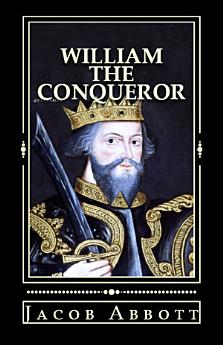William the Conqueror
Feb 2024 · E-Kitap Projesi & Cheapest Books
Ebook
300
Pages
family_home
Eligible
info
reportRatings and reviews aren’t verified Learn More
About this ebook
ALTHOUGH Rouen is now very far before all the other cities of Normandy in point of magnitude and importance, and though Rollo, in his conquest of the country, made it his principal headquarters and his main stronghold, it did not continue exclusively the residence of the dukes of Normandy in after years. The father of William the Conqueror was Robert, who be-came subsequently the duke, the sixth in the line. He resided, at the time when William was born, in a great castle at Falaise. Falaise, as will be seen upon the map, is west of Rouen, and it stands, like Rouen, at some distance from the sea. The castle was built upon a hill, at a little distance from the town. It has long since ceased to be habitable, but the ruins still remain, giving a picturesque but mournful beauty to the eminence which they crown. They are often visited by tra-velers, who go to see the place where the great hero and conqueror was born. It was about 870 that Rollo was banished from Norway, and a few years after that, at most, that he landed in France. It was not, however, until 912 that he concluded his treaty of peace with Charles, so as to be fully invested with the title of Duke of Normandy. He was advanced in age at this time, and, after spending five years in settling the affairs of his realm, he resigned his dukedom into the hands of his son, that he might spend the remainder of his days in rest and peace. He died in 922, five years after his resignation. He was only ten years old when his father was assassinated. He became involved in long and arduous wars with the King of France, which compelled him to call in the aid of more Northmen from the Baltic. His new allies, in the end, gave him as much trouble as the old enemy, with whom they came to help William contend; and he found it very hard to get them away. He wanted, at length, to make peace with the French king, and to have them leave his dominions; but they said, "That was not what they came for." Richard had a beautiful daughter, named Emma, who afterward became a very important political personage, as will be seen more fully in a subsequent chapter. Richard died in 996, after reigning fifty-four years.
About the author
NORMANDY ONE of those great events in English history, which occur at distant intervals, and form, respectively, a sort of bound or landmark, to which all other events, preceding or following them for centuries, are referred, is what is called the Norman Conquest. The Norman Conquest was, in fact, the accession of William, duke of Normandy, to the English throne. This accession was not altogether a matter of military force, for William claimed a right to the throne, which, if not altogether perfect, was, as he maintained, at any rate superior to that of the prince against whom he contended. The rightfulness of his claim was, however, a matter of little consequence, except so far as the moral influence of it aided him in gaining possession. The right to rule was, in those days, rather more openly and nakedly, though not much more really, than it is now, the right of the strongest.
Rate this ebook
Tell us what you think.
Reading information
Smartphones and tablets
Install the Google Play Books app for Android and iPad/iPhone. It syncs automatically with your account and allows you to read online or offline wherever you are.
Laptops and computers
You can listen to audiobooks purchased on Google Play using your computer's web browser.
eReaders and other devices
To read on e-ink devices like Kobo eReaders, you'll need to download a file and transfer it to your device. Follow the detailed Help Center instructions to transfer the files to supported eReaders.








